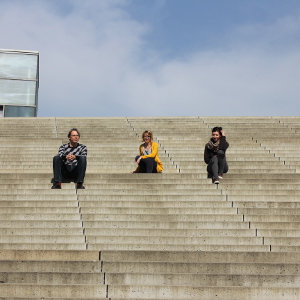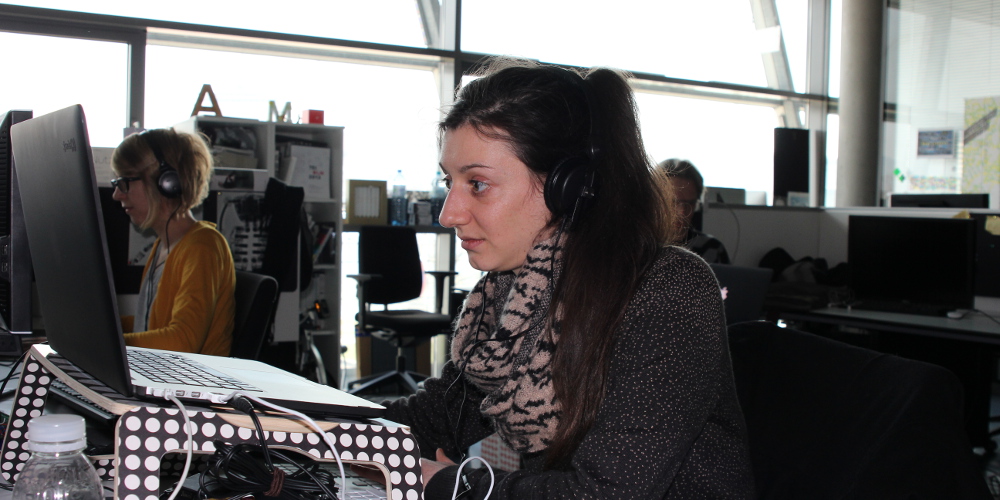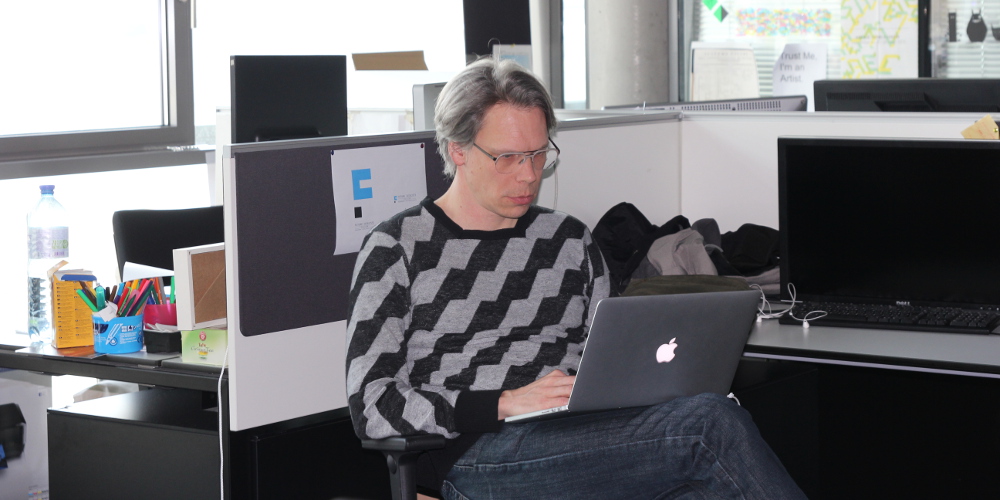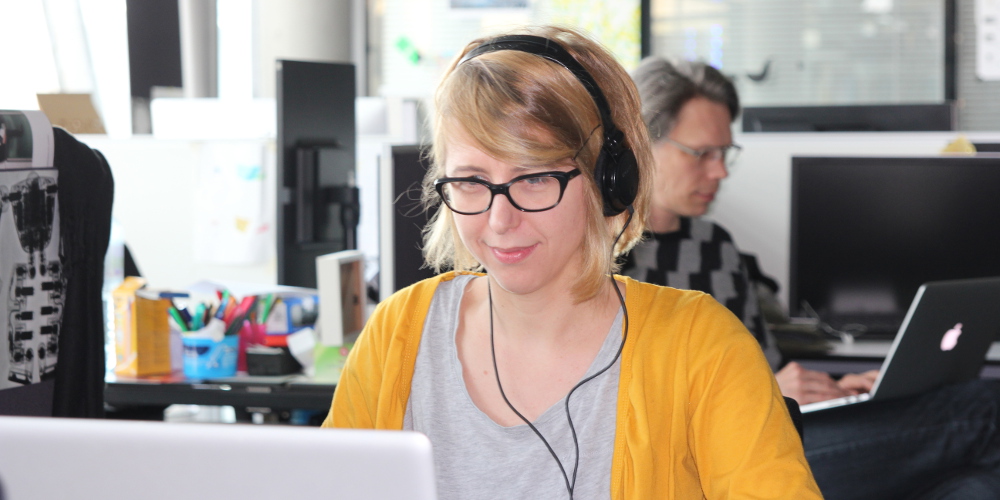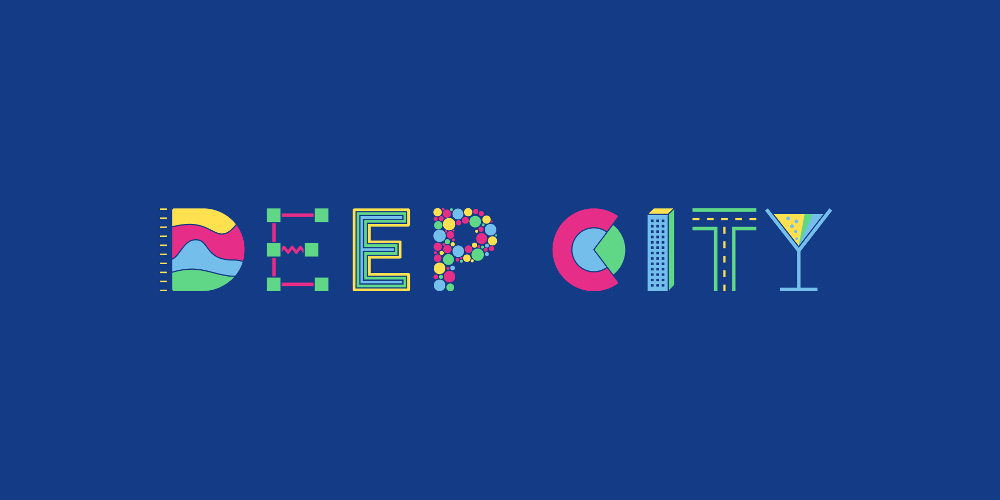In conjunction with residencies staged at the Ars Electronica Futurelab, Anita Brunnauer, Dietmar Offenhuber and Ursula Feuersinger are producing art projects that will premiere on the interactive LED façade of the Ars Electronica Center.
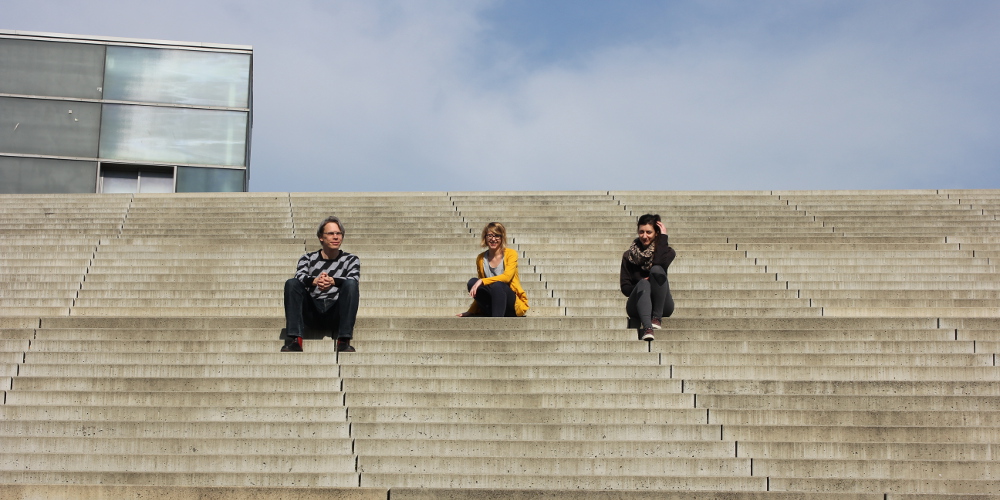 Dietmar Offenhuber, Ursula Feuersinger and Anita Brunnauer (from left to right), Photocredits: Magdalena Leitner
Dietmar Offenhuber, Ursula Feuersinger and Anita Brunnauer (from left to right), Photocredits: Magdalena Leitner
“In/Visible City” is this year’s theme of Connecting Cities. In conjunction with residencies staged at the Ars Electronica Futurelab, Anita Brunnauer, Dietmar Offenhuber and Ursula Feuersinger are producing art projects that will premiere on the interactive LED façade of the Ars Electronica Center and then be featured at the sound:frame festival in Vienna and the Connecting Cities conference help under the aegis of the 2015 Ars Electronica Festival.
In this interview, the trio let us in on what their art projects are all about and how it’s possible to take something invisible and make it appear before our eyes.
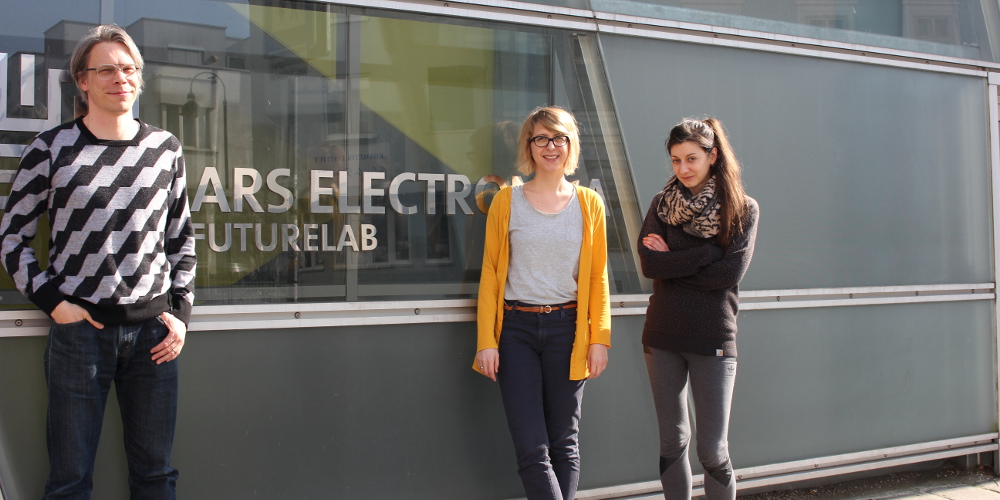 Dietmar Offenhuber, Ursula Feuersinger and Anita Brunnauer (from left to right)
Dietmar Offenhuber, Ursula Feuersinger and Anita Brunnauer (from left to right)
Each of the three institutions participating in the Connecting Cities network has a different take on this year’s theme “In/Visible City.” At Ars Electronica, the primary focus is on making the invisible visible. How is it possible to do this? Could you give us an example?
Anita Brunnauer: I find that emotions, which, after all, are actually invisible, can very well be made visible. For example, audio-visually, they can be gotten across very effectively.
Ursula Feuersinger: It also seems to me that much of the digital information buzzing about our world is invisible or at least extremely opaque. And these aren’t just cold, impersonal numbers without specific, personal applications; they can, for example, specifically describe our human coexistence or social configurations like a city. Material can also be made visible in a very simplified form. Musical tones, sounds and noise can also be visualized quite effectively.
Dietmar Offenhuber: I believe that the question of “What is invisible?” is quite an interesting one precisely because being invisible can, after all, have several different meanings. On one hand, certain things actually are invisible since, for example, pipes are buried beneath the street so you can’t see them, or something is so big and complex that you can’t observe it from a particular point of view. Another reason why things can be invisible is because they’re abstract—like data, for instance. Bruno Latour once said “The city per se is invisible” because you can never perceive the city as an object. It has so many facets that, no matter what you look at, you distort your view of other things. I think that the really interesting invisible things are simply the everyday habits of city dwellers. People just do certain things automatically and don’t even take note of them anymore in the course of their daily lives. That also applies, of course, to a lot of elements of a city’s infrastructure that determine our everyday life. Here, art can impart an interesting irritant to shake people up a bit and show them colorful alternatives to lackluster routines.
The three of you are pursuing quite dissimilar projects. Anita, yours is entitled blindage, which is a French word meaning shielding, and has to do with the boundary between disclosure and concealment of data. Here, you use a mask as a visual metaphor.
Anita Brunnauer: Exactly, since, of course, masking means hiding something from view. I have the feeling that we don masks on a daily basis—for example, on social media sites. That which we expose to the outside world rarely reflects the way we really feel. I also think that the Ars Electronica Center’s LED façade can be a sort of mask in that this stylish outer shell effectively veils how the people inside feel. This is simply a parallel, and the façade serves as a dramatic setting for a thematic encounter with masks. There’s somehow a certain synergy.
Do you already know how this will ultimately be depicted on the LED façade?
Anita Brunnauer: Yes. I produce high-resolution footage [uncut film] that’s structured dramaturgically in three chapters, whereby each chapter constitutes a stand-alone sequence. The first chapter deals with the interplay of humankind and nature; the second chapter is about an animal’s struggle to adapt to society; and the third chapter’s theme is loss of face in the Digital Age. My work on the façade is extremely organic, which is actually totally contrary to the principle of the illumination of the Ars Electronica Center’s LED façade since this is normally structured geometrically. My work is also very minimalistic so, in the first chapter, I attempt to use analog, crafted plant masks to impart an organic look and feel to the façade when viewers look through the mask. This continues in the second chapter. The images in the third chapter were made through a microscope. Here, I attempt to display an object at an extreme degree of magnification on the huge surface of the façade. This is, once again, a metaphor for concealment behind a mask since, actually, no one will know what’s actually being displayed because it’s enlarged to such a great extent.
Dietmar, what’s your project about?
Dietmar Offenhuber: My project is actually quite simple. On the LED façade, I display complaints received by the city, and thus visualize in the public sphere what people are complaining about. I find this fascinating because there are now many different systems that publish such complaints on a website. But I think it’s something completely different when they’re displayed right in the cityscape. The result is the development of a certain dynamism. People who submit a complaint are made cognizant of the fact that it’s then immediately visible by anyone in the cityscape. Here, I’m simply interested in these social dynamics that emerge between individual citizens and the municipal administration.
But I find it very interesting on the aesthetic side too, since the city is actually always in motion and never in a perfect state of equilibrium.
There’s never a time when everything has been cleaned up, maintained or repaired, and there’s actually no prospect that this will ever be the case. This state of imperfection goes on and on, ad infinitum.
What, in your opinion, changes when the complaints are made visible?
Dietmar Offenhuber: Yes, that’s the question! On one hand, of course, it certainly does make a difference when I submit a complaint—or, in the positive sense, a suggestion—to the city, to know for sure that it’s arrived and that someone has read it, because otherwise I don’t get any feedback at all. On the other hand, there’s a second scenario in which I fire off a complaint and I then receive personal feedback from a particular municipal official who then goes about seeing to the matter. And then there’s a third scenario in which the whole city can see my complaint or suggestion. In the third scenario, I would probably give great consideration to the means of expression I utilize. The more visible my matter of concern is, the more I have to be cognizant of the fact that this is somehow a public discourse and I have to formulate my ideas in different words, and perhaps put less emphasis on my personal wishes or personal problems with the city and maybe focus more on the common good. It would be lovely if this were conducive to the development of a certain consciousness.
Ursula, in your project you aim to represent the collective information of a city in a digital cross-section.
Ursula Feuersinger: My project is entitled Deep City. Its basic assumption is that, beneath the city, there are various layers that you can’t immediately see at first glance. These strata contain information that provides detailed and comprehensive descriptions of our coexistence and its framework circumstances. One of the things I’m interested in is how densely populated a city is, how people get around, what that sounds like, and how much green space like parks is available to city dwellers. Installation visitors can then use a sort of crank to “extract” this information and bring it to the surface (i.e. onto the façade). With a second interaction element, a cube, users can also turn the content horizontally, whereby each face of the cube represents a different city. So this makes possible an international comparison—for instance, you can see how Linz measures up to New York.
Is the objective of this project to get the general public to rethink a few things?
Ursula Feuersinger: Sure. But one of the points high on my agenda in this project is that people aren’t only passively confronted with data; rather, that they see that they themselves are a part of the whole, part of the city, and also a part of Big Data. After all, it’s actually their own information that they have to “raise” in order to then see it in a larger context.
Anita Brunnauer
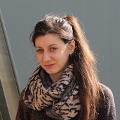 anita brunnauer aka. nita. is a vienna based graphic designer, studied multimediaarts at the university of applied sciences in salzburg, interned at lovely nitrocorpz™ a small designstudio in Goiânia/Brasil and later worked as artdirector for servus tv. beginning of 2014 nita. founded her own multidisciplinary studio for visual arts. nita. is also part of the sound:frame av label. proud & silent graphic ghost of duzz down san records. the visual style can be understood as constant interplay between daydream & night watch, surface & depth of flotation. a visual funambulation among kitch & melancholia – hijacking into a surreal forrest, where animals mutate & forgotten ancestors reveal on leaves.
anita brunnauer aka. nita. is a vienna based graphic designer, studied multimediaarts at the university of applied sciences in salzburg, interned at lovely nitrocorpz™ a small designstudio in Goiânia/Brasil and later worked as artdirector for servus tv. beginning of 2014 nita. founded her own multidisciplinary studio for visual arts. nita. is also part of the sound:frame av label. proud & silent graphic ghost of duzz down san records. the visual style can be understood as constant interplay between daydream & night watch, surface & depth of flotation. a visual funambulation among kitch & melancholia – hijacking into a surreal forrest, where animals mutate & forgotten ancestors reveal on leaves.
Dietmar Offenhuber
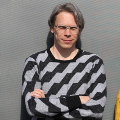 Dietmar Offenhuber is Assistant Professor at Northeastern University in the departments of Art + Design and Public Policy. He holds a PhD in Urban Planning from MIT, studied at the MIT Media Lab and TU Vienna. Dietmar investigates urban infrastructure such as formal and informal waste systems and has published books on the subjects of Urban Data, Accountability Technologies and Urban Informatics.
Dietmar Offenhuber is Assistant Professor at Northeastern University in the departments of Art + Design and Public Policy. He holds a PhD in Urban Planning from MIT, studied at the MIT Media Lab and TU Vienna. Dietmar investigates urban infrastructure such as formal and informal waste systems and has published books on the subjects of Urban Data, Accountability Technologies and Urban Informatics.
Ursula Feuersinger
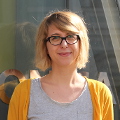 Ursula Feuersinger is a graphic and video designer based in Vienna, Austria. After studying Information Design with a focus on media and interaction, she worked in Berlin as a video designer and produced stage projections for theatrical works. In 2007 she moved to Vienna, where she has been active as a video artist, visual performer, exhibition-, brand-, web- and print designer. She has been collaborating with the sound:frame festival since 2008, and her work has been presented in Shanghai, Melbourne, Geneva, Moscow and Trieste. Ursula founded her own graphic and motion design studio in 2013.
Ursula Feuersinger is a graphic and video designer based in Vienna, Austria. After studying Information Design with a focus on media and interaction, she worked in Berlin as a video designer and produced stage projections for theatrical works. In 2007 she moved to Vienna, where she has been active as a video artist, visual performer, exhibition-, brand-, web- and print designer. She has been collaborating with the sound:frame festival since 2008, and her work has been presented in Shanghai, Melbourne, Geneva, Moscow and Trieste. Ursula founded her own graphic and motion design studio in 2013.
The projects will premiere on April 4th (9 pm) on the façade of the Ars Electronica Center, followed by a presentation at the opening of the sound:frame festival on April 9th (9:45 pm).
https://ars.electronica.art/futurelab/en/residency-network/connectingcities/
